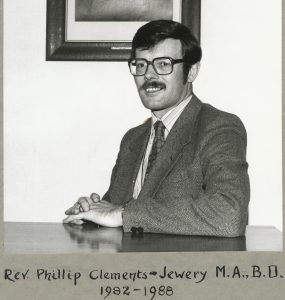The only connection with Sheffield’s General Cemetery is the name of the road on which the church stands! The church was built in 1859, with an eye to the future, since it came just before the houses, now replaced by Landsdowne maisonettes.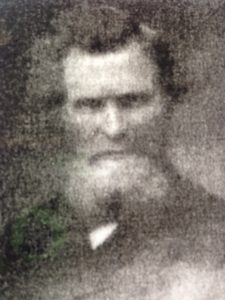
The congregation began when Cornelius Atkinson (see pic right), a General Baptist, came to Sheffield from Retford in 1837 and met with some others in a house in Rockingham Street.
From the Church’s first minute book, page one:
‘Several brethren and sisters having removed to Sheffield from various places where they had been connected with General Baptist Churches; it was thought very desirable that these friends should be encouraged to commence a new interest in the large and populous town of Sheffield. Thus on the first Sabbath in September, 1839, the few friends met to commence religious meetings, to read the Scriptures, and exhort each other to a patient obedience and perseverance in every good word and work.’
The Church was founded in 1839 by eleven members, who by 1841 had called their first pastor, Rev. T.H. Hudson, and by 1842 had built premises in Eyre Street. In 1859 the church moved to a new building in Cemetery Road. In 1891 it joined the Baptist Union of Great Britain along with other General Baptist churches.
You can read a little about the early history of the Church from this link to an article in biblicalstudies.org.uk marking the centenary of our founding: CRB early history
In recent years, our Church has grown in diversity in many ways, particularly with our ethnic mix. From the late 1950s we have been blessed by members arriving from Jamaica and other West Indies Islands – particularly because of CRB links through Rev. Price, Rev. Tucker and Rev. Brown (a retired missionary from Jamaica who joined CRB in the 1960s). Watch this video telling of personal stories of those Church members who came over in those early days. In the past decade we have seen large numbers from the Karen community, Burma, from Iran and the Congo region, as well as many other countries from all corners of the world.
Previous Ministers
1841-1844 Rev. T.H. Hudson (left to be a missionary in China, where he later died – see picture top right) 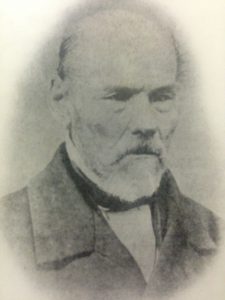
1845-1849 Rev. Thomas Horsfield
1850-1851 Rev. John Batey (returned to pastor in Burnley)
1851-1864 Rev. Henry Ashber(r?)y (left to pastor in Luton)
1864-1879 Rev. Giles Hester (left to pastor at Berkhamstead, Bucks. before soon retiring due to ill health in Hillsborough)
1880-1883 Rev James Maden (left to pastor in Old Basford, Nottingham)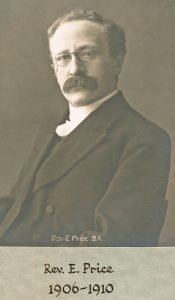
1883-1905 Rev E. Carrington (left to pastor in Woodborough Road, Nottingham)
1906-1911 Rev. Ernest Price (left to be the Principal of the Calabar Baptist College and first Headteacher of the Calabar High School in Jamaica – see picture R.)
c.1910s Rev. G. (or L.) Gethin Hughes (assistant minister, founded Woodseats Baptist Church)
1911-1917 Rev. C.E. Shipley (left to pastor in Edinburgh)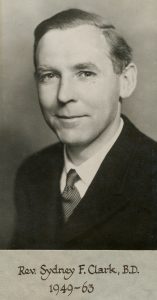
1918-1926 Rev. W.H. Stradling
1927-1943 Rev. T.J. Whitman (left to pastor at Albermarle BC, Scarborough)
1944-1948 Rev. Keith Tucker (left to be Principal of Calabar College, Jamaica)
1949-1963 Rev. Sydney F. Clark (left to be Area Superintendent, North East Baptist Association – see picture R.)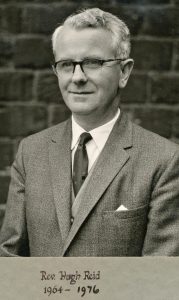
1950-1959 Rev. R.E. Clements (assistant minister, supporting the work at Southey Green Estate)
1964-1976 Rev. Hugh Reid (left to pastor at Tredegarville BC, Cardiff – see picture R.)
1977-1981 Rev. Clifford Smallman (deceased – see picture R.) 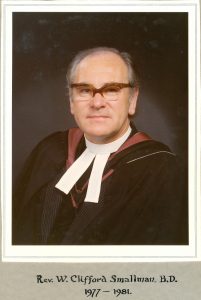
1980-1985 Rev. Malcolm Carroll (assistant minister, left to pastor at Thomas Helwys BC, Nottingham)
1982-1988 Rev. Philip Clements-Jewery (left to pastor in Liverpool – See picture R.)
1985-1993 Rev. Arthur Sommers (associate minister, retired)
1990-1999 Rev. Christopher J. Ellis (left to be Principal of Bristol Baptist College)
2000-2014 Rev. Nigel C. Manges (left to be Regional minister, South West Baptist Association)
2007-2009 Rev. Gary Stutton (associate, Minister for Mission)
Deaconesses
c.1910-1929 Miss C.H. Ridley
1929-1945 Sister Mabel
1947-1950 Sister Evelyn (started a Church plant on the Southey Green Estate, then left to work in Hull)
Notable Church Secretaries
1874-1908 Mr Crosher
1934 (or 1947-) Miss Kathleen L. Bateman (CRB’s first woman deacon in 1934)
?-1947 Mr Earnest Claxton
Recent Secretaries have included: Mr Bill Coward, Mr David Justham, Miss Vera Hemming, Mrs Christine Carr, Mr Jack Chatfield, Mr Martin Kilner, Mrs Brenda Brookes and Mr Peter Kennett (2006-2011), Mr Michael Milnes (2011-2015), and Mrs Carol Moore (2015-present).
Our building
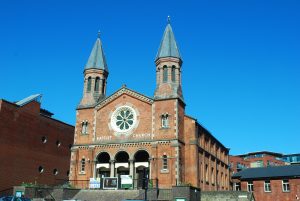
Why does CRB have twin spires?
Following the repair of our roof and removal of the scaffolding, our twin spires are now revealed in all their magnificent glory, with renewed brickwork and new slates. On top of each spire there is now a brand new finial (decoration), now gilded (painted with gold) and glistening in the sunshine. No longer can we be known as, “the church with the wobbly bobble”!
All this work reminded us that we had been told that Cemetery Road Baptist Church was modelled on Bloomsbury Baptist Church in London. However, Bloomsbury does not have two spires. Also, our architect, Thomas Flockton, was based in Sheffield, not London. However, Bloomsbury Baptist Church’s website reveals that the church did have twin spires, but that they were demolished in 1951, because they were unsafe. We hope we have caught ours in time!
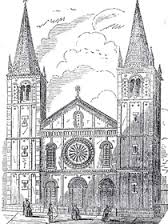
But why two spires at Bloomsbury in the first place? Their website states that the church was built in 1848 as the first major Baptist Church to stand prominently on a fashionable London street, after several centuries when non-conformist churches in general were tucked away unobtrusively (or else, perhaps felt that “ecclesiastical” architecture was too much like the Established Church). The website implies that the church was sponsored by Sir Samuel Morton Peto, MP, who had made his money in the early days of railway building. Quoting from their website, “The story goes that when the Crown Commissioner was reluctant to release the land to non-conformists, with their dull, spire-less architecture, Peto exclaimed, ‘A spire, my Lord? We shall have two!’”
St. Matthew’s Church, Carver Street, was also designed by Flockton, a few years before CRBC, along traditional Anglican lines and nothing like our own church. St. Matthew’s follows a very “high” (Anglo-Catholic) tradition, so it was interesting recently to learn of the focus on evangelism and social ministry among the local people in the late 19th Century continuing to the present day. CRBC was deliberately sited on the edge of Sheffield in 1859, with an eye to the future, as houses were built all along Cemetery Road in 1860, with exactly the same purposes in mind, which we, too, try to continue.
In case we forget the rest of our building, the Hall has been completely re-slated and the gutters mended. There was a decrepit old skylight above the rear corridor and this has now been replaced with a new unit, which will keep out the rain but let in more light. Inside, the Hall ceiling has been insulated (with sheep’s wool, duly mothproofed!), and the ceiling has been stabilised so it will not collapse. The Hall is being re-decorated and will soon be fit for purpose once more; we look forward to being able to use it again.
The bulk of this work has been funded by the Government’s Roof Repair Fund, and a donation from Viridor Credits Environmental Company (with money derived from the Landfill Tax). A donation from the Henry and Harry Bottom Baptist Trust enabled Viridor to release this funding to the church, and further generous funding has been granted by the Yorkshire Historic Churches Trust and the Church Burgesses Trust. We are most grateful to all these agencies.
At times, some of us wished that we could have knocked down the twin spires and saved ourselves money in repair bills, but our status as a Grade II Listed Building means that we couldn’t! The benefit of being listed is that we are eligible for recovery of the VAT, once we can find our way through the paperwork.
